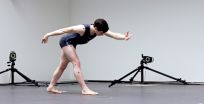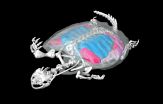INFORMATION:
About the Vitality Institute
The Vitality Institute is an evidence-driven, action-oriented research organization working to strengthen the evidence base around what works and what doesn't work in health promotion and chronic disease prevention. Its mission is to advance knowledge about the evolving science and art of prevention and health promotion in order to build healthier societies and reduce incidence of non-communicable diseases. The Vitality Institute is an initiative of Discovery, a global financial services provider, and is part of Discovery's commitment to health promotion and well-being programs. More information is available at http://www.thevitalityinstitute.org
Workplace health programs are key to improving american life expectancy and health
Research study recommends five steps for businesses and Americans to benefit from workplace disease prevention programs
2014-11-07
(Press-News.org) New York - As Americans face growing health and financial burdens from preventable, non-communicable diseases such as cardiovascular disease, diabetes and certain cancers, a new study demonstrates employers have a unique opportunity to improve Americans' health. The research is led by Dr. Katherine Tryon and Dr. Derek Yach from the Vitality Institute and is published in the November issue of the Journal of Occupational and Environmental Medicine.
The study, which involved a first-of-its-kind comprehensive review of existing research into workplace health programs, notes that even though the United States spends more on health care than any other country, the life expectancy and disease-specific survival rates of Americans has not improved at a rate similar to other developed countries. It traces the problem to the fragmented spending on public health and disease prevention programs in United States, and finds the workplace is a common central setting where evidence-based disease prevention and health promotion programs could be easily implemented. These programs could positively influence the health of 155 million working-age Americans while financially benefiting their employers by reducing healthcare costs, reducing sick time and improving productivity.
The study's authors recommend business and governmental leaders take the following five steps to encourage the adoption of evidence-based disease prevention and health promotion programs in the workplace:
1. Increase the level of training in health promotion and disease prevention and the level of advocacy by leaders both inside and outside of the workplace
2. Provide government incentives for employers to invest in workplace health programs
3. Increase the quality and quantity of research into the benefits of workplace health programs
4. Adjust government regulations to promote the use of evidence-based disease prevention programs
5. Link workplace and community-based programs in order to multiply the effect of each program
"Encouraging employers to invest in programs that help their employees live longer, healthier lives is not only good for society, it is also good for a company's bottom line," said Dr. Tyron. "I hope this research will encourage corporate and governmental leaders to take action and implement evidence-based workplace health programs."
ELSE PRESS RELEASES FROM THIS DATE:
A vaccine directed against tumor blood vessels suppress tumor growth and metastasis
2014-11-07
In a new study published in the scientific journal Oncotarget researchers from Uppsala University show that a therapeutic vaccine directed against tumor vessels can reduce tumor burden and suppress formation of spontaneous lung metastases in a mouse model for metastatic breast cancer.
The target molecule of the immunization strategy is the extra domain-A (ED-A) of fibronectin, a protein domain which is highly selective for the tumor vasculature in the adult.
"The vaccination approach we have employed is not prophylactic but therapeutic, meaning that immunity was induced ...
NASA-NOAA's Suomi NPP satellite sees Tropical Cyclone 05B headed to India
2014-11-07
Tropical Cyclone 05B was meandering in the Bay of Bengal on Nov. 8, but forecasters expect it to move west and head toward east-central India for landfall. NASA-NOAA's Suomi NPP satellite captured a visible image of the tropical storm off India's coast.
When Suomi NPP flew over Tropical Cyclone 05B (TC05B) on Nov. 7 at 08:09 UTC (3:09 a.m. EST), the Visible Infrared Imaging Radiometer Suite or VIIRS instrument aboard captured a visible image of the storm. The VIIRS image showed a band of thunderstorms wrapping into the center from the northern quadrant, and fragmented ...
Actions versus objects: The role of the motor system
2014-11-07
Amyotrophic lateral sclerosis (ALS) is a very severe disease that mainly affects the motor system. Recently the focus of public attention thanks to a viral campaign (remember last summer's ALS Ice Bucket Challenge?), ALS leads to progressive paralysis and ultimately death. Among the lesser known symptoms of the disease are cognitive impairments, which may even involve full-blown dementia. One of them is a selective difficulty in understanding and using verbs denoting actions, which these patients find much more challenging to process compared to nouns denoting objects. ...
The best sensory experience for learning a dance sequence
2014-11-07
This news release is available in German.
How can a sequence of dance steps best be learned? This question was the subject of a project led by researchers from Bielefeld University and the Palucca University of Dance in Dresden, who developed the study along with dancers and dance instructors. Together they researched whether dancers learn a dance sequence better by seeing or by listening, that is, if a dance instructor first demonstrates the sequence, or if he or she first gives a spoken explanation. The research article detailing the results of this study was recently ...
Origin of the unique ventilatory apparatus of turtles
2014-11-07
Through the careful study of modern and early fossil tortoise, researchers now have a better understanding of how tortoises breathe and the evolutionary processes that helped shape their unique breathing apparatus and tortoise shell. The findings published in a paper, titled: Origin of the unique ventilatory apparatus of turtles, in the scientific journal, Nature Communications, on Friday, 7 November 2014, help determine when and how the unique breathing apparatus of tortoises evolved.
Lead author Dr Tyler Lyson of Wits University's Evolutionary Studies Institute, the ...
Brain's response to threat silenced when we are reminded of being loved and cared for
2014-11-07
Being shown pictures of others being loved and cared for reduces the brain's response to threat, new research from the University of Exeter has found.
The study discovered that when individuals are briefly presented pictures of others receiving emotional support and affection, the brain's threat monitor, the amygdala, subsequently does not respond to images showing threatening facial expressions or words. This occurred even if the person was not paying attention to the content of the first pictures.
Forty-two healthy individuals participated in the study, in which ...
Maybe it wasn't the Higgs particle after all
2014-11-07
Last year CERN announced the finding of a new elementary particle, the Higgs particle. But maybe it wasn't the Higgs particle, maybe it just looks like it. And maybe it is not alone.
Many calculations indicate that the particle discovered last year in the CERN particle accelerator was indeed the famous Higgs particle. Physicists agree that the CERN experiments did find a new particle that had never been seen before, but according to an international research team, there is no conclusive evidence that the particle was indeed the Higgs particle.
The research team has ...
New antibiotic in mushroom that grows on horse dung
2014-11-07
This news release is available in German. Microbiologists and molecular biologists at ETH Zurich and the University of Bonn have discovered a new agent in fungi that kills bacteria. The substance, known as copsin, has the same effect as traditional antibiotics, but belongs to a different class of biochemical substances. Copsin is a protein, whereas traditional antibiotics are often non-protein organic compounds.
The researchers led by Markus Aebi, Professor of Mycology, discovered the substance in the common inky cap mushroom Coprinopsis cinerea that grows on horse ...
Research project emphasizes the need to persuade parents to make their children walk to school
2014-11-07
An international research project, which includes researchers from the U. of Granada, has proved the need for campaigns to persuade parents of the benefits involved in having their children walk to school. This also includes work on the perception about the security of the paths their children need to follo won the way to school. This research points out, besides, the need for public administrations to actively campaign to persuade children and their families to walk more often as part of their daily routines.
Many different surveys have demonstrated that walking to school ...
Sperm analysis parameters as an indication for ICSI instead of IVF: Benefit still unclear
2014-11-07
Since suitable studies are lacking, it remains unclear in which sperm analysis parameters assisted reproduction using intracytoplasmic sperm injection (ICSI) can be superior to in vitro fertilization (IVF). This is the conclusion of the final report published by the Institute for Quality and Efficiency in Health Care (IQWiG) on 6 November 2014.
Benefit assessment depending on parameters
The Federal Joint Committee (G-BA) commissioned IQWiG with the examination of two research questions: First, the researchers were to assess the benefit of ICSI in comparison with IVF ...
LAST 30 PRESS RELEASES:
Scientists ID potential way to prevent brain injuries from triggering Alzheimer's
MASTER 2nd Open Call: Execution period kick-off
Algae for health in food and pharma
Advanced microrobots driven by acoustic and magnetic fields for biomedical applications
Chicago health information leader recognized for raising CPR readiness and blood pressure awareness
The Intimate Animal, a new book from Kinsey Institute Executive Director Dr. Justin Garcia
When blue-collar workers lose union protection, they try self-employment
New video dataset to advance AI for health care
MEA-based graph deviation network for early autism syndrome signatures in human forebrain organoids
New modeling approach sheds light on rare gut disease
Study documents potentially hazardous flame retardants in firefighter gear
Can certain bacteria regulate aging of the immune system and its related alterations?
AI model helps diagnose often undetected heart disease from simple EKG
There are fewer online trolls than people think
Cell membrane fluctuations produce electricity
Jeonbuk National University study shows positive parenting can protect adolescents against self-harm
Surface-engineered ZnO nanocrystals to tackle perfluoroalkyl substance contamination
This new understanding of T cell receptors may improve cancer immunotherapies
A new fossil face sheds light on early migrations of ancient human ancestor
A new immunotherapy approach could work for many types of cancer
A new way to diagnose deadly lung infections and save lives
40 percent of MRI signals do not correspond to actual brain activity
How brain-inspired algorithms could drive down AI energy costs
Gum disease may be linked to plaque buildup in arteries, higher risk of major CVD events
Contrails are a major driver of aviation’s climate impact
Structure of dopamine-releasing neurons relates to the type of circuits they form for smell-processing
Reducing social isolation protects the brain in later life
Keeping the heart healthy increases longevity even after cancer
Young adults commonly mix cannabis with nicotine and tobacco
Comprehensive review illuminates tau protein's dual nature in brain health, disease, and emerging psychiatric connections
[Press-News.org] Workplace health programs are key to improving american life expectancy and healthResearch study recommends five steps for businesses and Americans to benefit from workplace disease prevention programs





